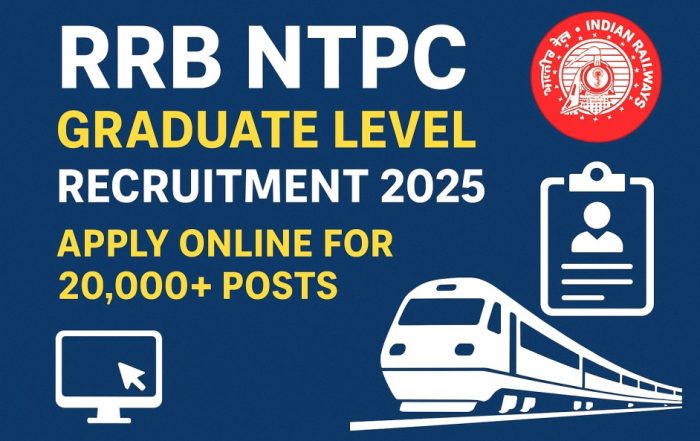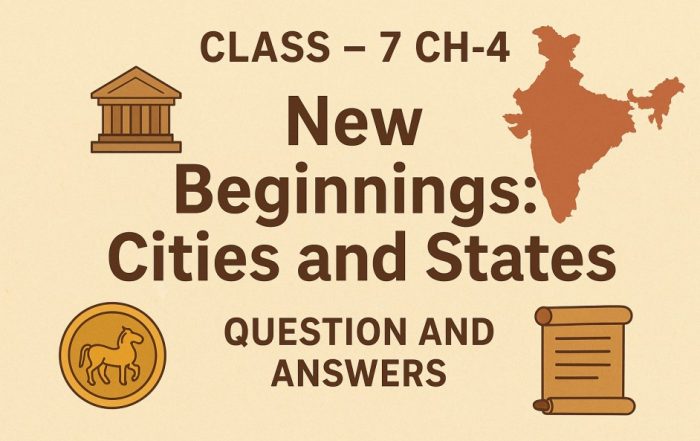RECENT POSTS
RRB NTPC Graduate Level Recruitment 2025 – Apply Online for 20,000+ Posts
RRB NTPC Graduate Level Recruitment 2025 – Apply Online for 20,000+ Posts 🚆✨ RRB has released the short notification for RRB NTPC Graduate Level Recruitment 2025 for more than 20,000 vacancies across India. Eligible candidates [...]
Class 7 – Chapter 4: New Beginnings – Cities and States (Questions and Answers)
CLASS – 7 CH-4 : New Beginnings : Cities and States Question and Answers Ancient India witnessed the rise of early cities, powerful states, and new forms of governance.This chapter explains how kingdoms expanded, how [...]
KVS NVS Recruitment 2025 – Apply for 14,967 Posts
KVS NVS Recruitment 2025 – Apply for 14,967 Posts ✨ Kendriya Vidyalaya Sangathan (KVS) and Navodaya Vidyalaya Sangathan (NVS) have announced the KVS NVS Recruitment 2025 for a total of 14,967 teaching and non-teaching vacancies. [...]
Climate of India Class 7 Chapter 3 : Notes, Q&A and Activities
Class 7 Geography Chapter 3: Climate of India – Notes, Q&A & Activities 🌦️ India has a wide range of climates — from the icy mountains of Leh to the warm coasts of Chennai. Below [...]
NCERT Solutions For Class 7 Social Science Chapter 1 – Geographical Diversity of India
🌏 Geographical Diversity of India – Class 7 Chapter 1 Questions and Answers India is known for its breathtaking geographical diversity — from ❄️ snow-covered mountains to 🌴 lush plains and 🏖️ coastal beauty. Let’s [...]
Understanding the Weather – Class 7 chapter 2 Geography
🌦️ Understanding the Weather – Class 7 chapter 2 Geography When we look up at the sky, sometimes we see bright sunshine, sometimes dark clouds, and at other times we hear the sound of thunder. [...]
कक्षा 10 विज्ञान अध्याय 1 – रासायनिक अभिक्रियाएँ एवं समीकरण | महत्वपूर्ण प्रश्न उत्तर सहित
कक्षा 10 विज्ञान अध्याय 1 – रासायनिक अभिक्रियाएँ एवं समीकरण | अभ्यास प्रश्न उत्तर सहित इस अध्याय में हम रासायनिक अभिक्रियाओं और समीकरणों से जुड़े महत्वपूर्ण प्रश्नों और उनके उत्तरों पर चर्चा करेंगे। प्रश्न 1. [...]
🔥 IBPS Clerk Prelims Result 2025 Out: Direct Link, Cut Off & Scorecard
IBPS Clerk Prelims Result 2025: Expected Release Date & Direct Link The Institute of Banking Personnel Selection (IBPS) successfully conducted the IBPS Clerk Prelims Exam 2025 on 4th and 5th October 2025 across multiple centers [...]
SEBI Grade A Recruitment 2025: Apply Online for 110 Assistant Manager Posts
The Securities and Exchange Board of India (SEBI) has announced Officer Grade A (Assistant Manager) Recruitment for 2025.With 110 vacancies across seven streams, this recruitment offers one of the most prestigious career opportunities in India’s [...]
कक्षा 10 विज्ञान – अध्याय 3: धातु एवं अधातु
कक्षा 10 विज्ञान – अध्याय 3: धातु एवं अधातु धातु के भौतिक गुण:अधातु के भौतिक गुण:बहुविकल्पीय प्रश्न / रिक्त स्थान निम्न में से धातु का गुण नहीं है – (अ) ध्वनिक (ब) तन्यता (स) आघातवर्ध्यता [...]












